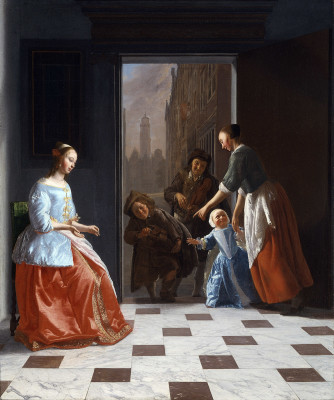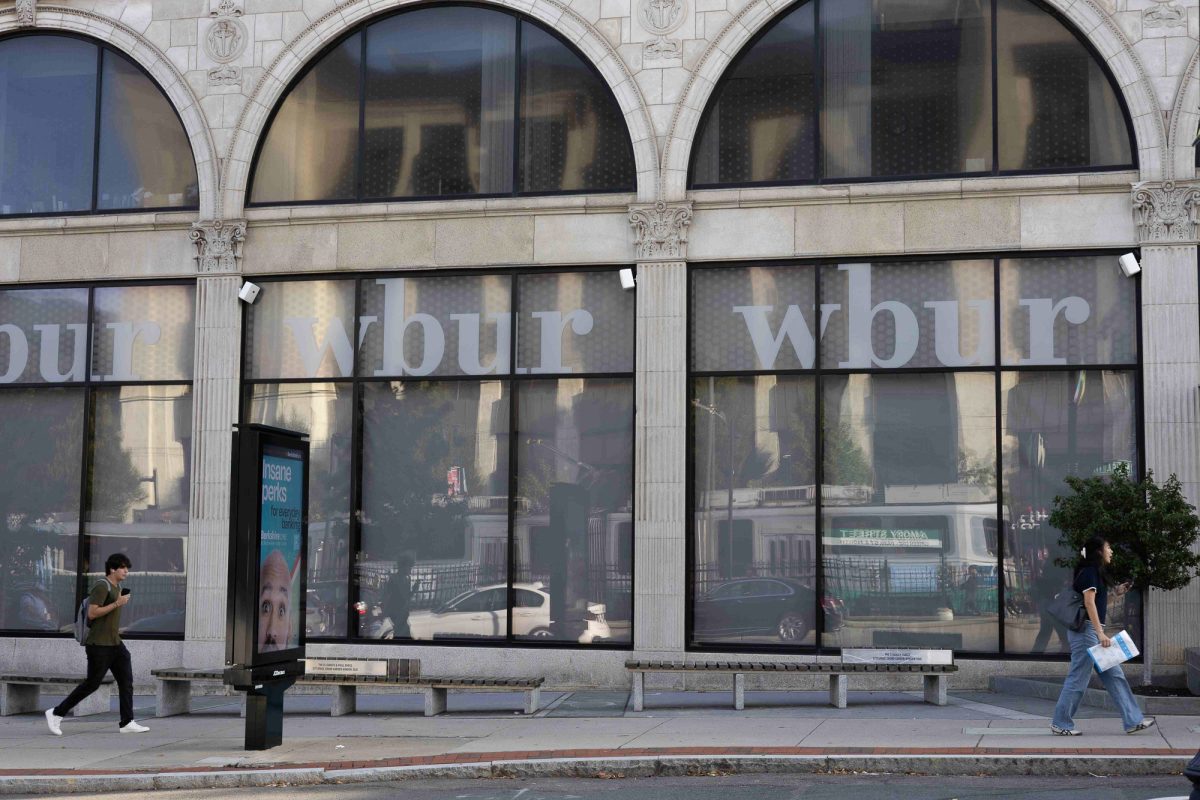
Quill in hand, a woman turns away from her desk and placidly gazes at a viewer as if momentarily interrupted while crafting her letter. Illuminated by a mystifying invisible light, the lady is swathed in richly yellow fur. The hues of yellow-tin paint, opalescent pearl earrings and satin ribbons are juxtaposed with the dark interior of the darkly lit room.
These qualities give the painting rich depth and texture — the precision and range of Johannes Vermeer is at play. Through “A Lady Writing,” this scene is brought to fruition and invites visitors of the Museum of Fine Arts back to this very moment in 1665.
In “Class Distinctions: Dutch Painting in the Age of Rembrandt and Vermeer,” the MFA beckons a closer look at the Dutch Republic during the 17th century. Introducing a variety of paintings from the finest Dutch painters of the period, the exhibit, which will open to the public Sunday, showcases 75 carefully constructed paintings of the Golden Age and beautifully eternalizes members of all sects of Dutch society.
The MFA worked together with a group of curators specializing in Dutch art to coordinate a show that explores how rank and status were expressed in the Netherlands back then, said exhibition curator Ronni Baer. Synthesizing the two ideas, Baer put together a show of Dutch masterpieces.
“Preparations for the show began two years ago, before the Occupy [Wall Street] movement,” Baer said. “But the subject is certainly as relevant today as it was 400 years ago.”
The exhibit follows a logical sequence by grouping paintings of the wealthiest ranks in one room and then moving down the social strata in the following sections. The final room ties the exhibit together by depicting paintings of ferries and public squares where members of each class intersect.
Freed from the limitations of royal and church patronage, the artists were able to depict various civilians from regents and aspiring nobles to textile merchants, barber-surgeons and prostitutes. In doing so, the artists provide a wealth of valuable information regarding possessions, activities and circumstances of distinguished social class members.
In addition to commissioned portraits of stadtholders and the aspiring middle class, many of the paintings give a glimpse into daily life, using brushes as instruments to lure viewers into the reality of the 1600s.
Borrowed from the British Royal Collection, Rembrandt’s “The Shipbuilder and his Wife” beautifully captures the moment during which the shipbuilder’s wife urgently enters the room with a letter, her hand still on the door handle. Rather than a traditional portrait, Baer said, Rembrandt presents his subjects engaged in the moment of lively interaction — a turning point for Dutch portraiture — from the thin, individual strokes of Jan Rijcksen’s beard to the broad strokes delineating the background.
In the “Women at Work” section of the exhibit, Pieter de Hooch’s “Interior with Women beside a Linen cupboard” depicts two women properly storing freshly cleaned linens. At the time an emblem of prosperity, linen held social significance that has faded in modern society. The painting is an intriguing reminder of how even the smallest details in society have changed over time.
The scenes depicted in “Class Distinctions” illustrate a larger point regarding the varying degrees of work in 17th century Dutch society. Not only does the exhibit showcase the disparity of wealth and the breadth of the Dutch class system, but it also presents the prismatic and brilliantly detailed technical capabilities of the artists painting the picture. In addition to Rembrandt and Vermeer, artists Frans Hals, Pieter de Hooch and Gerard ter Borch are among a few of the artists that were able to escalate the banal into the beautiful and forever immortalize a small piece of the world’s expansive history.





















































































































